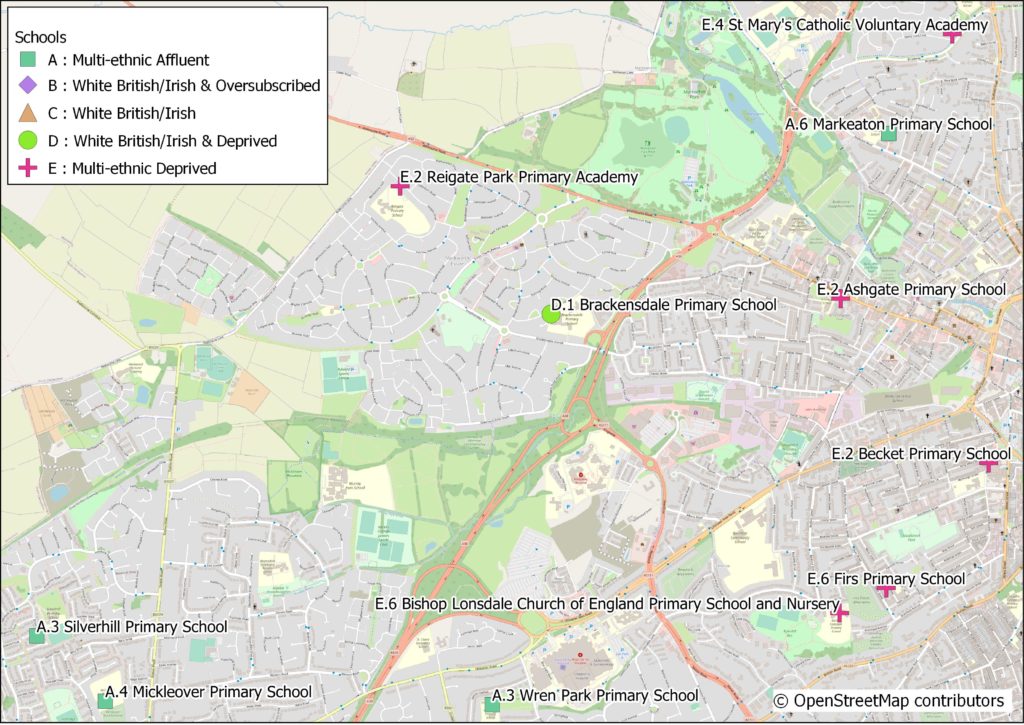CDRC researchers, Dr Stephen Clark, Dr Nik Lomax and Professor Mark Birkin have developed a new classification for English primary schools to encourage better collaboration and enable more nuanced benchmarking.
England has statutory regulations in place that ensure state funded schools deliver broadly the same curriculum. However there still exists a wide range of contexts in which this education takes place, including: the management of schools; how the schools chose to spend their budgets; individual policies in regards to staffing, behaviour and attendance, and perhaps most importantly, the composition of the pupil population in the school. Given these contexts, one outcome of interest is the attainment profile of schools, and it is important that this performance is judged in context, for the benefit of pupils, parents and schools.
Developing a new classification
To help provide this context CDRC researchers, Dr Stephen Clark, Dr Nik Lomax and Professor Mark Birkin have developed a new classification using contemporary data for English primary schools. Thanks to the European Regional Science Association, they have made available a resource that identifies families of primary schools in England, where schools share common characteristics.
The recently published study allocates schools into one of 32 sub-groups, allowing schools to compare their performance, either academically or financially with similar schools. These groupings allow the identification of “families of schools”, to act as a resource to foster better collaboration between schools and enable more nuanced benchmarking.
Users are able to search by location to view schools in their area.
A novel approach to classifying schools
Dr Stephen Clark explains “We identified the two most important aspects as firstly, the ethnic composition of the school, either from the background of the pupils or the number of pupils where English is not a first language.
The second being the level of affluence, measured by neighbourhood characteristics or the number of pupils eligible for free school meals. Other important aspects include the degree of oversubscription for popular schools, and the number of authorised or unauthorised absences.
In this study the academic performance of the school is not ’baked into’ the classification, so that differences in schools performance can exist, and be identified and investigated or shared.”
Example
Looking at the Midland’s City of Derby, we see that for a school like Reigate Park Primary they would be better to look to schools further afield, such as St Mary’s Catholic or Ashgate schools for appropriate peers to share experiences with, rather than the closer by Brackensdale school.

Using open data
The data for the study comes from the Department for Education in England, collected each year during the Spring term’s Annual Census of Pupils and Schools.
This regularity of data allows the groupings to be revised over time, which is useful as the circumstances of a school are not fixed over time. We would expect to see some changes to the groupings as schools are transformed through new leadership or by changes to catchment areas and their population.
Find out more
- Read the article in full.
- Explore the map.
- View the data

